
- Michael Asbury

Driving Continuous Improvement with 4-Blockers
Turn unhappy campers into your biggest fans.

Unhappy Campers
A long, long time ago at a company far, far away, the leadership was not happy with the performance of an expensive piece of automated equipment purchased & installed about 6 months earlier.
Their assumption was that implementing this capital project would solve the performance issues with one of their production constraints.
Unfortunately, the performance issues were not solved.
The process needed 75% more operators & additional overtime
Additional inspections were required
An additional programmer was needed to support the primary operator
Twice as much space was used for the process
Scrap and rework actually increased
Disruptions to the next process were even more frequent
To say they were “not happy” with the ROI and anticipated negative payback time would be a gross understatement.
That is when I was called in and explained to that "this project was going to succeed" and it was my responsibility to make it happen…like now!
Without any hesitation, I formed a small team of 5 people that understood the process, the inputs, and the quality requirements as well as the skills and authority to make the necessary changes. We held a weekly meeting to review the output versus our daily goal and the issues hindering additional flow. The key Continuous Improvement tool we used to communicate during this meeting is called a 4-Blocker . We used a simple Defect Log to track the daily output and defect types & locations, which was linked to the 4-Blocker graphs.
Within 2 months:
Throughput through the automated process doubled
Defects per unit reduced from 11 dpu to 0.01 dpu
Scrap became rare
Inspections were reduced
Headcount returned to normal (besides some periodic programming)
Overtime became rare
There was a buffer of units ready for the next operation
What is a 4-Blocker?

A 4-Blocker is a highly adaptable and effective 1-page collaboration tool that shows multiple views of a process over a given period of time.
The 1st Quadrant uses a line graph with output versus time to show a history of process output relative to a target & a bar chart displays the count of issues per day. A stretch goal target line may be added 10 to 20% above the current target.
The 2nd Quadrant provides a breakdown of type and location of issues in the form of a stacker bar graph arranged from high to low by occurrence. It could just as easily have been arranged by location with type stacked or with impact instead of occurrence.
The 3rd Quadrant is an area filled in during a review meeting in which team members rank the issues quantified in the 2nd quadrant, then discuss and identify the most likely root causes.
In the 4th Quadrant , actions that can reduce or prevent the recurrence of issues are identified and responsibilities with dates are assigned.
The actions taken should follow the PDCA model (Plan-Do-Check-Act) in which a test action is executed and then judgment made whether to adjust and test again or move on with full implementation. Lessons learned from successful actions in one area should be quickly implemented in the other target areas with appropriate modifications.
The periodic review meeting should be allowed to take 30-60min. Weekly is a good starting point. Reducing the frequency to monthly, or as needed, is recommended when the number of issues drops to a predefined level. The team members need to have the knowledge, skills, and authority to take appropriate actions related to the process with a sense of urgency.
Common Results within 60 days in the Target Area
Depending on the level of support and prioritization, the following results are not uncommon:
40-60% Less Rework
20-50% Less Scrap
40-50% Less Overtime
20-50% More Throughput
By utilizing some simple data and engaging teams Quality, Cost, and Throughput can ALL be rapidly improved.
We use a systematic approach to gain insight & understanding into organizations in order to make rapid improvements where it will have the most impact.
Our methodology is a combination of Lean Six Sigma & Theory of Constraints called TLS. TLS is like combining a grand slam and a slam dunk to create a new power move... The Grand Slam Dunk !
You can think of us as strategic problem solvers.
We really enjoy developing and executing strategic rapid improvement plans for organizations. It is great to see bottom line results come to fruition!
Check out our self-study eLearning course if you would like to find out how to drive Data Driven Continuous Improvement for Rapid Improvement in your organization! If you're interested in our other courses, check out our course catalog .

For More Info Contact:
O 888.489.5121
F 704.479.7206
www.elevate-outcomes.com
Charlotte, NC, United States
Recent Posts
Critical Thinking - The Missing Link to Better Outcomes
Rapid Robot Ramp Up
Finding & Overcoming My First Bottleneck
Examples of Problem Solving with 4 Block
- Math Tutorials
- Pre Algebra & Algebra
- Exponential Decay
- Worksheets By Grade
Using 4 Block (4 Corners) Template in Math
Print the 4 Block Math Template in PDF
In this article I explain how to use this graphic organizer in math which is sometimes referred to as: 4 corners, 4 block or 4 square.
This template works well for solving problems in math that require more than one step or with problems that could be solved by using different strategies. For younger learners, it would work well as a visual which provides a framework for thinking through the problem and showing the steps. We often hear "use pictures, numbers and words to solve problems". This graphic organizer lends itself to support problem solving in math.
Using 4 Block for a Math Term or Concept
Here is an example of using 4 block to help with the understanding of a term or concept in math. For this template, the term Prime Numbers is used.
A blank template is provided next.
Blank 4 Block Template
Print this blank 4 block template in PDF.
This type of template can be used with terms in math. (Definition, Characteristics, Examples and non Examples.) Use terms like Prime Numbers, Rectangles, Right Triangle, Polygons, Odd Numbers, Even Numbers, Perpendicular Lines, Quadratic Equations, Hexagon, Coefficient to name a few.
However, it can also be used to solve problems like a typical 4 block problem. See the Handshake Problem example next.
4 Block using Handshake Problem
Here is an example of the handshake problem being solve by a 10 year old. The problem was: If 25 people shake hands, how many handshakes will there be?
Without a framework to solve the problem, students often miss steps or don't answer the problem correctly. When the 4 block template is used regularly, learners improve in their ability to solve problems as it forces a way of thinking that works for solving problems.
- Popular Math Terms and Definitions
- Critical Thinking Definition, Skills, and Examples
- Graphic Organizers in Math
- The Frayer Model for Math
- Math Stumper: Use Two Squares to Make Separate Pens for Nine Pigs
- Study Tips for Math Homework and Math Tests
- Problem Solving in Mathematics
- First Grade Math: Word Problems
- Using Graphic Organizers for Special Education
- How to Use Math Journals in Class
- Parentheses, Braces, and Brackets in Math
- Distance, Rate, and Time Worksheets
- The Typical 10th Grade Math Curriculum
- The Horse Problem: A Math Challenge
- Report Card Comments for Math
- The 10 Things That Worry Math Teachers the Most
Back to Basics: Using the 4 Blocker for Project Management Communication - DockYard
- Project Management

Client Partner
5 April 2022
- Share on Twitter
- Share on LinkedIn
- Copy To Clipboard Copied to clipboard
All experienced project managers know that keeping a project on track and flowing smoothly hinges on effective communication. And when you’re sending information from your team to an outside partner, it’s vital to provide it in a consistent, concise way that makes consumption easy and keeps decision making simple.
One of the ways I’ve achieved that throughout my career is with the 4 Blocker. The 4 Blocker is a one-page document that gives a stakeholder critical information at a glance. Not only does this give them a high-level understanding of the project, but it’s also helpful to ensure that the project management team shares information with clients uniformly, no matter who’s sending it.
While the 4 Blocker may have initially been a teaching tool for junior project managers, it’s also a helpful refresh for seasoned project managers who are far down the rabbit hole of long, narrative status updates (which may or may not even be read!).
Getting back to the basics challenges project managers to eliminate information overload. Usually, each block of information contains a limit of three bullet points. This framework encourages project managers to include only the most critical information in the update (ensuring the update can be consumed quickly and easily.)
The document has two focus areas:
- The introduction, and
- The substance
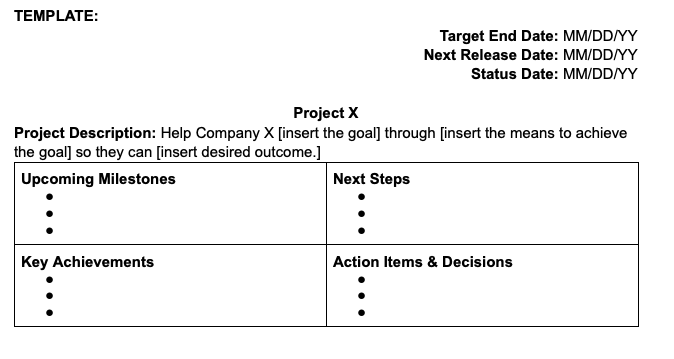
The Introduction
The introduction consists of project staples:
The project name
A one-sentence description: The goal for what the team should accomplish by the end of the project. It’s important to keep this front and center so everyone stays on task. This centers everyone around a specific goal to avoid scope creep or misunderstandings.
Dates, which should include your
Target End Date : The date you anticipate the project will be completed.
Next Release Date : This section is important for teams that work in sprints, like we do at DockYard. This is where you’ll list the date at the end of a sprint when you’ll release your work to the client for a demo, further discussion, etc.
Status Date : The date you’re sending the 4 Blocker to the client for review
The Substance
The substance of the 4 Blocker consists of:
Upcoming milestones: These are points within the timeline that your team has identified as important markers to ensure you’re on the right track as you progress through the project.
Key achievements: These are items or tasks the team agreed during the previous sprint were important to complete, and which they’ve checked off during the current sprint.
Next steps: These items are the next block of work the team will complete in the upcoming sprint.
Action items & decisions: When meeting with the client, sometimes they need to decide how to proceed. Capture these tasks for visibility and accountability for the upcoming sprint.
As with any documentation, The 4 Blocker can be adjusted depending on the organization, frequency of updates, or specific measurements desired. Regardless of what form you decide to use, however, it’s important that the project team use the same template consistently so all clients receive uniform information regardless of the project.
Sometimes the basics are exactly what your team needs to get back on track. Relying on the 4 Blocker is a simple, effective way to make sure you, your team, and your client get all the most important information quickly and reliably.
Stay in the Know
Get the latest news and insights on Elixir, Phoenix, machine learning, product strategy, and more—delivered straight to your inbox.
The Project Manager Pad
Posts, surveys, tutorials and know-how about project management, leadership, career development, self-improvement, software
- Project Management
- Management Today
- What does a project manager do?
- T&C - Privacy
How to write a project 4-blocker

1) a description of what's the scope of the project ( WHAT ) 2) a list of the milestones achieved ( ACHIEVEMENTS ) 3) a summary of the risks and the opps you have identified and you are managing with the team ( SPOTLIGHT ) 4) an outlook on the next milestones ( WHAT'S NEXT ).

- Block #1 (left hand side, on the top):
- Block #2 (right hand side, on the top):
- Block #3 (left hand side, on the bottom):
- Block #4 (right hand side, on the bottom):
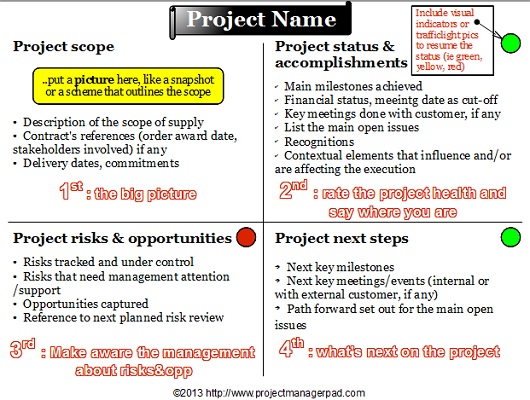
- Project management
How to use Toyota’s legendary A3 problem-solving technique
Georgina Guthrie
February 21, 2020
If you came home one day and found your kitchen taps on full-blast and your house full of water, what’s the first thing you’d do? Grab a bucket and start scooping — or turn off the tap?
When it comes to problem-solving, many of us take a rushed, reactionary approach rather than fixing the issue at the source. So in other words, we see the water, panic, and start scooping. If this sounds like something you’ve done recently, then don’t feel too bad: when the pressure’s high, we often jump towards the quickest fix, as opposed to the most effective one.
This is where the A3 technique comes in. It’s a problem-solving approach designed to efficiently address the root cause of issues.
What is the A3 technique?
The A3 technique is a structured way to solve problems. It’s part of the Lean methodology , developed by Toyota back in the mid-’40s. This doesn’t mean you need to implement a Lean way of working to take advantage of this process — it can work as a standalone exercise.
Granted, A3 isn’t an inspiring name, but the story of its origins is actually pretty interesting. Rumour has it that Taiichi Ohno, inventor of the Toyota Production System, refused to read past the first page of any report. In response, his team created A3 address and summarize problem-solving on one side of A3-sized paper. The A3 technique played a huge part in Toyota’s success and all kinds of industries have since adopted it. Here’s how to get started.
How to solve a problem with A3
The first thing to remember is this: A3 is collaborative and relies on good communication. It’s not something you should do by yourself.
There are three main roles involved:
- Owner (that’s you or someone under your charge)
As you’ve probably guessed, these aren’t roles that already exist in your company; you must create them for the purpose of this process. Here’s what they mean.
The owner is responsible for leading the exercise. They are the lynchpin between the two other roles, fostering good communication and keeping documents up to date. It’s tempting to think of the owner as the head of this trio, but that’s not true: everyone is equal here.
The mentor is someone with solid problem-solving experience. It’s their job to coach the owner and steer them towards finding a solution. It’s not their job to find the answers themselves.
And finally, there are the responders . This is someone (or a group of people) who have a vested interest in the outcome of the A3 project. Responders might include the client, stakeholders, or managers. A potential problem here is gaining access to them: if you work somewhere with a strict hierarchy — and you’re somewhere near the bottom of that structure — you may face challenges. There’s no easy way around this. Essentially, you need your organization to support this way of working and make it easy for you to access those at the top if needed.
How to create an A3 report
True to its origins, the A3 report is a one-page document. It typically contains 5-7 sections that systematically lead you towards a solution. These are the most commonly used steps, but feel free to modify them.
- Background: Explain your project in a few sentences, including its context.
- Problem statement: Explain the current problem. You can use process mapping to see the different tasks that surround the issue. This isn’t essential, but it will make it easier for you to locate the root cause.
- Goals: Define your desired outcome, and include metrics for measuring success. You won’t know everything until you reach the end, so you may find you need to come back and refine stages 1-3.
- Root cause analysis: This is a big stage of the process. You need to work out what you think the root problem is. You can use different methods to help you here, including 5 whys or a fault tree analysis .
- Countermeasures: Once you’ve worked out your root cause, you can start proposing solutions.
- Implementation: Work out how you’ll implement these solutions, including an action list with clearly defined roles and responsibilities. Project management software is a useful tool here because it can help everyone on the team track each other’s progress in real-time.
- Follow-up: Using your metrics for success, decide whether the problem was solved. Report your results back to the team/organization. In the spirit of Lean (continuous improvement), you should go back and modify your plan if the results weren’t as expected. And if they were, you should make this process the new standard.
Final thoughts
A3 is an efficient, methodical way to solve problems at their source. When issues rear their head, rising stress can lead people to panic. Having a clearly designed system in place to guide you towards a solution minimizes the chances of people settling for a ‘quick fix’ or failing to act altogether.
Beyond being a guiding light in times of pressure, A3 is a great team-building exercise because it encourages individuals to work together towards a common goal — across all areas of the organization. Combine this with collaborative tools designed to help teams track progress and work together more effectively, and you’ll be unstoppable.

Solve problems like a pro with Root Cause Corrective Action

Lean to Six Sigma: process improvement methodologies explained
Subscribe to our newsletter.
Learn with Nulab to bring your best ideas to life

- I Want to Learn Project Management
- Core Project Management Courses
- I Want to Study Agile Project Management
- Agile Project Management Courses
- Project Management Software
- I Need my Team to be Better at Project Management & Delivery
- I Want to Study for Project Management Professional (PMP)
- The Project Manager’s PMP Study Guide
- PMI Qualifications and PDUs
- I Want to Study for PRINCE2
- PRINCE2 Qualifications
- Agile Qualifications (Scrum and more)
- ITIL Qualifications
- Project Management Knowledge Areas
- Leadership and Management Skills
- Professional Personal Effectiveness
- Artificial Intelligence
- Our Latest Project Management Articles
- Themed Directory of PM Articles
- All Our PM Articles: List
- Our Top ‘Must-Read’ Project Management Guides
- Project Management Podcasts
- All our Project Management Tools & Resources
- Free Online Project Management Resources
- Project Management Productivity Bundle
- Project Management Template Kit
- Project Management Checklists
- Project Management Bookshop
- Project Management Domains
- OnlinePMCourses Kindle-exclusive Project Management eBooks Series
- What is Your Project Management Personality?
- Project in a Box
- The OnlinePMCourses Newsletter
- About OnlinePMCourses
- Contact OnlinePMCourses
- Frequently Asked Questions
- How it Works
- Volume Licensing of Project Management Courses for Businesses
- Become an OnlinePMCourses Affiliate
- Writing for OnlinePMCourses
- How to Build OnlinePMCourses
- OnlinePMCourses Email Whitelisting Instructions
- OnlinePMCourses Privacy Policy
- Free Academy of PM
1 November, 2021
0 comments
Impediments, Obstacles, and Blockers: How to Address and Remove Them
By Mike Clayton
Sometimes, stuff gets in the way of doing our jobs. But, for Project Managers, impediments, obstacles, and blockers are our day-to-day job.
If you don’t know how to deal with them…
Or, worse, if you find them uncomfortable frustrations that you’d rather avoid…
Then maybe, Project Management isn’t for you.
And the Project Management Institute (PMI) has recognized this. In its new, more pragmatic Project Management Professional (PMP) exam (from 2 January 2021), this forms one part of the syllabus.
Among 35 tasks PMI will examine PMP candidates upon, one (Domain I Task 7) is:
Address and Remove Impediments, Obstacles, and Blockers for the Team
PMI suggests you need to know how to:
- Determine critical impediments, obstacles, and blockers for the team
- Prioritize critical impediments, obstacles, and blockers for the team
- Use network to implement solutions to remove impediments, obstacles, and blockers for the team
- Reassess continually to ensure impediments, obstacles, and blockers for the team are being addressed
On the face of it, there isn’t much to this: it’s just dealing with stuff. But, to me, there is a big overlap here with Issue Management – the topic of Domain II Task 15 and what I often refer to as the PMBOK Guide’s Missing Knowledge Area .

Our Approach to the Topic
In this article, we will look at how to address and remove project impediments, obstacles, and blockers. We’ll look at:
What does PMI mean by Impediments, Obstacles, and Blockers?
The basic approach to project impediments, obstacles, and blockers, the core attitude for helping your team to overcome impediments, obstacles, and blockers, informal approaches to address and remove impediments, obstacles, and blockers, formal approaches to address and remove impediments, obstacles, and blockers, specific agile approaches to address and remove impediments, obstacles, and blockers.
The 6 th edition of the PMI’s Project Management Body of Knowledge (the PMBOK Guide) does not define either Impediment, Obstacle, or Blocker.
Helpfully, but not very, the new PMBOK 7 th edition steps in…
Impediment . An obstacle that prevents the team from achieving its objectives. Also known as a blocker. A Guide to the Project Management Body of Knowledge, 7 th edition Project Management Institute, 2021
So, is Address and Remove Impediments, Obstacles, and Blockers for the Team a pleonasm – unnecessary use of words? Or a tautology – using words that merely repeat the meaning of others you have already used?
Well, in common usage, these words are similar – as PMBOK 7 implies:
- Impediments impede your way
- Obstacles obstruct your way
- Blockers block your way
So, to justify this title, the official PMI training materials go through some hoops. From my notes to the PMP course I took, with an ATP ( the GreyCampus PMP course, which I recommend ), the PMI defines:
- Impediments : something that slows down or hinders progress
- Obstacles : something you need to move, go around, avoid, or overcome, using a strategy
- Blockers : something that causes work to stop
[Any errors in understanding or transcription from the PMI’s materials and the ATP Instructor are my own]
So… clear as mud.
If I had to guess, I’d speculate the PMBOK 7 authors were taking a pop at this nonsense!
And I shall use the three terms, impediments, obstacles, and blockers, interchangeably.
Whenever you encounter any of these different things (😉) you will first want to gather relevant members of your team, to understand what is going on. You’ll consider things like:
- What the issue is
- What the team has already tried, to resolve the problem
- Who needs to know about it
- Who will take responsibility for leading the resolution process
- What steps you can take
- And how you will follow-up, including communicating to stakeholders and documenting lessons learned
Two essential processes suggest themselves:
Prioritization, problem solving.
A good project team will establish baseline priority levels, which they will base on considerations such as:
- Potential delay
- Criticality of tasks delayed
- Dependencies that the delay impacts
- Stakeholders affected
- Ability of team members to revert to other, constructive, tsks
It will help to document this, alongside examples.
This will allow you to evaluate any impediments, obstacles, and blockers quickly and prioritize your attention.
Agile Prioritization Tools
Agile methods offer some useful tools for prioritization, such as:
- Fist of Five Team members spontaneously show 1 to five fingers representing their own assessment of the priority. The PM then allocates the priority level based on an average (mean or median)
- Planning Poker We have a video on this process, that uses scalings of 1, 2, 3, 5, 8, 13…
- T-Shirt Sizes This approach ranks an issue as Small (S), Medium (M), Large (L), Extra Large (XL), or XXL.
Quite simply, when a project runs into numerous obstacles, the team deals with them in priority order, allocating resources according to capabilities and priorities.
Problem-solving is a big topic in itself. So, rather than try to rush it, to fit into a small part of this larger article, I’ll direct you to our resources.
The place to start is with our extended article: Problem Solving: A Systematic Approach .
Other resources you may find helpful:
- Two Approaches to Solving Project Problems | Video
- What is Design Thinking? Human-centered Problem-solving | Video
Isn’t This Just Issue Management?
Ahh… Yes. To a large extent, we are talking about Issue Management here.
I called this the PMBOK’s missing process, or Knowledge area, and we have a detailed article: Issue Management: All You Need to Know about PMBoK’s Missing Process for an in-depth assessment.
Curiously, the same Examination Content Outline (ECO) that added Impediments, Obstacles, and Blockers to the PMP syllabus, also added Manage Project Issues (Domain II, Task 15).
PMI suggests you need to know:
- Recognize when a risk becomes an issue
- Attack the issue with the optimal action to achieve project success
- Collaborate with relevant stakeholders on the approach to resolve the issues
You may also like our video: How to Anticipate Future Budget Challenges to Your Project .
Your team will desperately want to do a good job. So, your role is to make it as easy for them to do this, as possible.
This is an approach to leadership, called Servant Leadership. In the video below, I refer to the role of a Servant Leader as providing rations (the things a team needs) and a raincoat (protecting the team from distractions).
So, a Servant Leader is a leader who sees their role as being the servant of the people who follow them. Their job is to:
- Provide their followers with what they need, while
- Removing obstacles from their way
This means tackling the blockers and distractions that will prevent your team from performing at their best. And it means taking on those burdens yourself, so they don’t have to. This will free them up, to be as efficient and effective as they can be.
As you’d expect, we have an in-depth article on Servant Leadership: How Servant Leadership can Deliver Better Results from Your Project Team .
Most of the day-to-day obstacles and impediments you’ll be dealing with only require an informal, ad hoc, approach. Let’s look at the two principal components that make up your daily unblocking approach:
- Communication
Communicating Impediments to Progress
You’ll need to meet stakeholders frequently, to keep them up-to-date. But don’t overload them. There is a fine balance between:
- openness and transparency about issues, on the one hand, and
- creating unnecessary distractions, concern, and workload, on the other
Impediments Board
Keeping your team informed is, in many ways, easier. Firstly, they are professionals. So, they both:
- Need to know what is going on
- Understand that an obstacle is just that – it’s not the end of the world(or even of the project)!
I recommend you keep a part of a large whiteboard or noticeboard to note impediments and issues that are ongoing. You can then ostentatiously cross them out when the matter is resolved. You can also use initials to let everyone know who the point-person (or Single Point of Contact – SPOC) is for the issue.
This ‘Impediments Board’ can be a physical board (my own preference) or part of your team collaboration software stack.
Using Meetings to Shift Obstacles to Your Project’s Progress
There’s a myth that daily stand-up meetings are an artifact of agile projects alone. Nonsense. I was using daily stand-ups before agile (or even Scrum) was a twinkle in the Agile Alliance’s eye!
These stand-up meetings are usually at the start of the working day and include a discussion of obstacles people are encountering.
Requests – Suggestions – Offers
A great way to end the meeting is with a round of requests, suggestions, and offers. In this, anyone can make a request of the group, because they have a blocker in their own work. In response, the facilitator calls first for suggestions. These need to be constructive ideas. Then, the facilitator will call for a round of offers of help, support, or resources.
The formal approach in predictive and hybrid projects – and within some agile teams is an Issue Log, or Issue Register. This takes a similar form to a risk register. Indeed, it is often a single, combined document. This is my preference, with issues being risks with 100% likelihood.
Some Project Managers also like the idea of a log of Risks, Issues, Decisions, and Actions (RIDA).
You would supplement this with a program of formal risk reviews. This can be at regular intervals or linked to key milestones in your project.
To keep on top of progress on issues and obstacles, I recommend you close your project team meetings with a ‘Triple-A Close’ .
- Summarise what has been said and agreed
- Formally note any decisions – in precise terms, if necessary
- Who will do what?
- Go around the table
- Get confirmation from each person
- State the next steps
- Signpost the next meeting
Always… (One more A) Thank people for their attendance and attention
There are two formal processes in an agile project that can really help with clearing blockers:
- Retrospective
Backlog Assessment
Sprint retrospective.
Although the purpose of the Sprint Retrospective is to find ways to improve quality and effectiveness, one way to do this is to understand the obstacles you faced and how you could tackle them going forward. Because, a sprint retrospective is a chance for your team to assess itself and find ways to improve during the next Sprint.
And, before each sprint, we need to select the work we are going to undertake. And, any impediments will simply get in the way of that work.
So, you need to assess your backlog and any already-committed activities in the context of known obstacles.
This can be either a:
- Proactive response to known risks and likely blockers
- Reactive response to known impediments
Responses include either:
- Including work on the obstacle as a part of the sprint
- Reducing drawdown from the backlog to make time to work on the blocker
- Select backlog items that are not affected by known impediments
Please Tell Us About Your Approaches to Impediments, Obstacles, and Blockers
As always, I am keen for you to share your own ideas and experience. And I will respond to every comment.

Never miss an article or video!
Get notified of every new article or video we publish, when we publish it.
Type your email…
Mike Clayton
About the author....
Get notified of every new article or video we publish, when we publish it.
Session expired
Please log in again. The login page will open in a new tab. After logging in you can close it and return to this page.
The World Of Math
Examples of Problem Solving with 4 Block

Using 4 Block (4 Corners) Template in Math Print the 4 Block Math Template in PDF In this article I explain how to use this graphic organizer in math which is sometimes referred to as: 4 corners, 4 block or 4 square. This template works well for solving problems in math that require more than one step or with problems that could be solved by using different strategies. For younger learners, it would work well as a visual which provides a framework for thinking through the problem and showing the steps. We often hear “use pictures, numbers and words to solve problems”. This graphic organizer lends itself to support problem solving in math.
Using 4 Block for a Math Term or Concept Here is an example of using 4 block to help with the understanding of a term or concept in math. For this template, the term Prime Numbers is used. A blank template is provided next.
Blank 4 Block Template Print this blank 4 block template in PDF. This type of template can be used with terms in math. (Definition, Characteristics, Examples and non Examples.) Use terms like Prime Numbers, Rectangles, Right Triangle, Polygons, Odd Numbers, Even Numbers, Perpendicular Lines, Quadratic Equations, Hexagon, Coefficient to name a few. However, it can also be used to solve problems like a typical 4 block problem. See the Handshake Problem example next.
4 Block using Handshake Problem Here is an example of the handshake problem being solve by a 10 year old. The problem was: If 25 people shake hands, how many handshakes will there be? Without a framework to solve the problem, students often miss steps or don’t answer the problem correctly. When the 4 block template is used regularly, learners improve in their ability to solve problems as it forces a way of thinking that works for solving problems.
Author: Arya Math
Leave a reply cancel reply.
Your email address will not be published. Required fields are marked *
Save my name, email, and website in this browser for the next time I comment.
Advertisement
Recent posts.
Copyright © 2024 Arya Math
Design by ThemesDNA.com
Terms and Conditions - Privacy Policy
support your career
get the interview & get the job
- Career Development
What Is a 4 Blocker? (Plus How To Create One in 6 Steps)
What is a 4 blocker.
A single-sheet tool called a “four blocker” separates content or project updates into various sections. This helps organize the information and encourages collaboration. The use of four blockers during meetings may also help attendees concentrate on the most crucial updates and steer clear of less crucial topics. They might enable you to conduct fewer or shorter meetings without compromising your ability to give your team important information.
The following are examples of typical quadrants, though exact titles and contents may differ:
A four blocker provides a summary of a project’s key components. Although it covers almost all project topics, it’s crucial that each quadrant’s information be brief. This supports the presentation’s effectiveness by emphasizing the key points that everyone should take away from it. Its goal is to facilitate and support presentation discussions, not to include all the specifics.
How to create a 4 blocker
The steps to create a four blocker are as follows:
1. Prepare the document
Prepare the document youll use for the four blocker. Think about putting the document on a shared platform so that others can easily view and update the chart and promote teamwork. Using line tools, divide the document into four equal quadrants, and then add text boxes to each section. Consider including the date of the meeting you are creating the four blocker for as a resource and put the name of the project at the top of the document.
2. Explain the project scope
Use Quadrant 1 to review the scope of the project. Make a list with bullets that highlights the most crucial project information and another list that discusses the most crucial delivery deadlines or commitments. You may also mention details about the contractor, such as their background and the date the contract was awarded.
Consider adding graphic elements in the quadrant. You could, for instance, make a timeline that depicts the project’s scope and key dates. Making a line graph that depicts the overall development of the project to this point is another choice.
3. Review the project status
Dedicate Quadrant 2 to discussing the progress of the project. List the major accomplishments of the teams and include information about any significant meetings you had with the stakeholders. Additionally, discussing the budget or potential problems the team might face could be helpful. Think about including background information that might be influencing the project’s progress.
Think about including graphic elements in this quadrant, too. You might, as an illustration, include a graph showing the development of milestones or deliverables. Another choice to think about is categorizing certain tasks according to their health by using different colors, like green, red, and yellow. With this approach, you can use green to denote completed tasks or tasks that are moving along well, yellow to denote tasks that may have potential problems, and red to denote causes for concern.
4. Discuss the opportunities
Include the potential risks and opportunities you may have encountered during the project in Quadrant 3. Inform managers of new risks you’ve discovered and discuss risks you’ve already identified and the effectiveness of your efforts to mitigate them. Similarly, now might be a good time to talk about any other chances you’ve found for success or improvement.
Quadrant 3 is an opportunity to raise your concerns with management. Think about enlisting their assistance in addressing these issues, and be sure to mention what steps you’ve already taken to address them. Share your plans for the following time you intend to review potential project risks to close out this section of the discussion. It might be beneficial to go over your specific review methodologies and any potential issues you foresee.
5. Establish an action plan
Discuss your next course of action in Quadrant 4 to complete your four blocks. List the upcoming key milestones and meetings for the project. Make sure to draw attention to crucial dates, particularly those that pertain to the problems discussed in Quadrant 3 Consider creating a chart to organize this information. You can describe the task or milestone, identify the responsible party, and indicate the deadline in the chart. This could ensure precision and eliminate uncertainty regarding who is in charge of what aspects of the project.
6. Review your 4 blocker
Check the document for accuracy after finishing your four blocks. Make sure to provide the appropriate updates and milestones and to include all the pertinent information you need to discuss in the meeting. It’s crucial to confirm that the document you create supports holding an effective meeting that lasts no longer than an hour. Finalize your four blocker, then distribute it as necessary.
4 Blocker PowerPoint Template | How To Use and Present
How do you present blockers on a project?
The 4 Blocker is a one-page document that provides key information to a stakeholder quickly. This not only gives them a broad understanding of the project but also helps to make sure that the project management team communicates with clients consistently regardless of who is sending the information.
Related posts:
- 15 BPI Certifications (With Tips for Choosing One)
- Report Writing Skills: Definition and Examples
- How To Measure Training Effectiveness in 5 Steps
- What Is ABC Inventory? (With Benefits, Steps and an Example)
- FAQ: What Is an Oil and Gas Management Degree?
- 30 Inspirational Career Change Quotes (And How They Help)
- 10 of the Best Master’s Degrees for the Future (And Jobs To Consider)
- 9 Paraprofessional Skills (Plus 3 Tips for Improving Them)
Related Posts
How to write a letter to the editor in 8 steps, how to learn embedded systems programming in 6 steps, leave a reply cancel reply.
Your email address will not be published. Required fields are marked *
Save my name, email, and website in this browser for the next time I comment.
Sliding Block Puzzle Solver
Download the sources! (BSD licensed): sliding-block-solver-v1.5.zip
Heres a post about the inception of the solver.

Brain Power
5 steps (and 4 techniques) for effective problem solving.
Problem solving is the process of reviewing every element of an issue so you can get to a solution or fix it. Problem solving steps cover multiple aspects of a problem that you can bring together to find a solution. Whether that’s in a group collaboratively or independently, the process remains the same, but the approach and the steps can differ.
To find a problem solving approach that works for you, your team, or your company, you have to take into consideration the environment you’re in and the personalities around you.
Knowing the characters in the room will help you decide on the best approach to try and ultimately get to the best solution.
Table of Contents
5 problem solving steps, 4 techniques to encourage problem solving, the bottom line.
No matter what the problem is, to solve it, you nearly always have to follow these problem solving steps. Missing any of these steps can cause the problem to either resurface or the solution to not be implemented correctly.
Once you know these steps, you can then get creative with the approach you take to find the solutions you need.
1. Define the Problem
You must define and understand the problem before you start, whether you’re solving it independently or as a group. If you don’t have a single view of what the problem is, you could be fixing something that doesn’t need fixing, or you’ll fix the wrong problem.
Spend time elaborating on the problem, write it down, and discuss everything, so you’re clear on why the problem is occurring and who it is impacting.
Once you have clarity on the problem, you then need to start thinking about every possible solution . This is where you go big and broad, as you want to come up with as many alternative solutions as possible. Don’t just take the first idea; build out as many as you can through active listening, as the more you create, the more likely you’ll find a solution that has the best impact on the team.
3. Decide on a Solution
Whichever solution you pick individually or as a team, make sure you think about the impact on others if you implement this solution. Ask questions like:
- How will they react to this change?
- Will they need to change anything?
- Who do we need to inform of this change?
4. Implement the Solution
At this stage of problem solving, be prepared for feedback, and plan for this. When you roll out the solution, request feedback on the success of the change made.
5. Review, Iterate, and Improve
Making a change shouldn’t be a one time action. Spend time reviewing the results of the change to make sure it’s made the required impact and met the desired outcomes.
Make changes where needed so you can further improve the solution implemented.
Each individual or team is going to have different needs and may need a different technique to encourage each of the problem solving steps. Try one of these to stimulate the process.
1-2-4 All Approach + Voting
The 1-2-4-All is a good problem solving approach that can work no matter how large the group is. Everyone is involved, and you can generate a vast amount of ideas quickly.
Ideas and solutions are discussed and organized rapidly, and what is great about this approach is the attendees own their ideas, so when it comes to implementing the solutions, you don’t have more work to gain buy-in.
As a facilitator, you first need to present the group with a question explaining the problem or situation. For example, “What actions or ideas would you recommend to solve the company’s lack of quiet working areas?”
With the question clear for all to see, the group then spends 5 minutes to reflect on the question individually. They can jot down their thoughts and ideas on Post-Its.
Now ask the participants to find one or two other people to discuss their ideas and thoughts with. Ask the group to move around to find a partner so they can mix with new people.
Ask the pairs to spend 5 minutes discussing their shared ideas and thoughts.
Next, put the group into groups of two or three pairs to make groups of 4-6. Each group shouldn’t be larger than six as the chances of everyone being able to speak reduces.
Ask the group to discuss one interesting idea they’ve heard in previous rounds, and each group member shares one each.
The group then needs to pick their preferred solution to the problem. This doesn’t have to be voted on, just one that resonated most with the group.
Then ask for three actions that could be taken to implement this change.
Bring everyone back together as a group and ask open questions like “What is the one thing you discussed that stood out for you?” or “Is there something you now see differently following these discussions?”
By the end of the session, you’ll have multiple approaches to solve the problem, and the whole group will have contributed to the future solutions and improvements.
The Lightning Decision Jam
The Lightning Decision Jam is a great way to solve problems collaboratively and agree on one solution or experiment you want to try straight away. It encourages team decision making, but at the same time, the individual can get their ideas and feedback across. [1]
If, as a team, you have a particular area you want to improve upon, like the office environment, for example, this approach is perfect to incorporate in the problem solving steps.
The approach follows a simple loop.
Make a Note – Stick It on The Wall – Vote – Prioritize
Using sticky notes, the technique identifies major problems, encourages solutions, and opens the group up for discussion. It allows each team member to play an active role in identifying both problems and ways to solve them.
Mind Mapping
Mind mapping is a fantastic visual thinking tool that allows you to bring problems to life by building out the connections and visualizing the relationships that make up the problem.
You can use a mind map to quickly expand upon the problem and give yourself the full picture of the causes of the problem, as well as solutions [2] .

The goal of a mind map is to simplify the problem and link the causes and solutions to the problem.
To create a mind map, you must first create the central topic (level 1). In this case, that’s the problem.
Next, create the linked topics (level 2) that you place around and connect to the main central topic with a simple line.
If the central topic is “The client is always changing their mind at the last minute,” then you could have linked topics like:
- How often does this happen?
- Why are they doing this?
- What are they asking for?
- How do they ask for it?
- What impact does this have?
Adding these linking topics allows you to start building out the main causes of the problem as you can begin to see the full picture of what you need to fix. Once you’re happy that you’ve covered the breadth of the problem and its issues, you can start to ideate on how you’re going to fix it with the problem solving steps.
Now, start adding subtopics (level 3) linking to each of the level 2 topics. This is where you can start to go big on solutions and ideas to help fix the problem.
For each of the linked topics (level 2), start to think about how you can prevent them, mitigate them, or improve them. As this is just ideas on paper, write down anything that comes to mind, even if you think the client will never agree to it!
The more you write down, the more ideas you’ll have until you find one or two that could solve the main problem.
Once you run out of ideas, take a step back and highlight your favorite solutions to take forward and implement.
The 5 Why’s
The five why’s can sound a little controversial, and you shouldn’t try this without prepping the team beforehand.
Asking “why” is a great way to go deep into the root of the problem to make the individual or team really think about the cause. When a problem arises, we often have preconceived ideas about why this problem has occurred, which is usually based on our experiences or beliefs.
Start with describing the problem, and then the facilitator can ask “Why?” fives time or more until you get to the root of the problem. It’s tough at first to keep being asked why, but it’s also satisfying when you get to the root of the problem [3] .
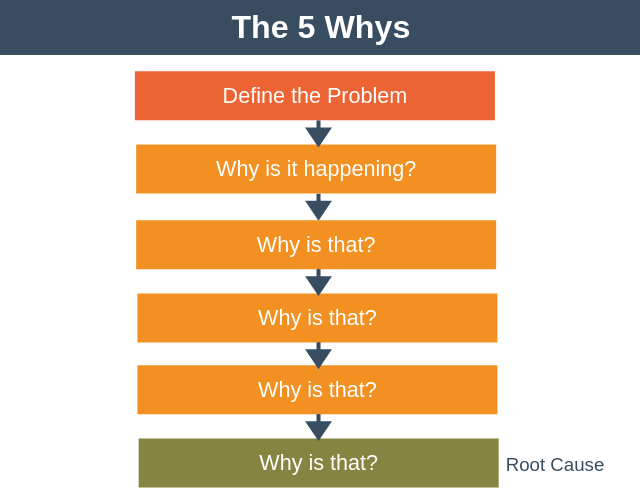
As a facilitator, although the basic approach is to ask why, you need to be careful not to guide the participant down a single route.
To help with this, you can use a mind map with the problem at the center. Then ask a why question that will result in multiple secondary topics around the central problem. Having this visual representation of the problem helps you build out more useful why questions around it.
Once you get to the root of the problem, don’t forget to be clear in the actions to put a fix in place to resolve it.
Learn more about how to use the five why’s here .
To fix a problem, you must first be in a position where you fully understand it. There are many ways to misinterpret a problem, and the best way to understand them is through conversation with the team or individuals who are experiencing it.
Once you’re aligned, you can then begin to work on the solutions that will have the greatest impact through effective problem solving steps.
For the more significant or difficult problems to solve, it’s often advisable to break the solution up into smaller actions or improvements.
Trial these improvements in short iterations, and then continue the conversations to review and improve the solution. Implementing all of these steps will help you root out the problems and find useful solutions each time.
| [1] | ^ | UX Planet: |
| [2] | ^ | Focus: |
| [3] | ^ | Expert Program Management: |

How to Use a Planner Effectively

How to Be a Better Planner: Avoid the Planning Fallacy

5 Best Apps to Help You Delegate Tasks Easily

Delegating Leadership Style: What Is It & When To Use It?

The Fear of Delegating Work To Others

Why Is Delegation Important in Leadership?

7 Best Tools for Prioritizing Work

How to Deal with Competing Priorities Effectively

What Is the RICE Prioritization Model And How Does It Work?

4 Exercises to Improve Your Focus

What Is Chronic Procrastination and How To Deal with It

How to Snap Out of Procrastination With ADHD

Are Depression And Procrastination Connected?

Procrastination And Laziness: Their Differences & Connections

Bedtime Procrastination: Why You Do It And How To Break It

15 Books on Procrastination To Help You Start Taking Action

Productive Procrastination: Is It Good or Bad?

The Impact of Procrastination on Productivity

How to Cope With Anxiety-Induced Procrastination

How to Break the Perfectionism-Procrastination Loop

15 Work-Life Balance Books to Help You Take Control of Life

Work Life Balance for Women: What It Means & How to Find It

6 Essential Mindsets For Continuous Career Growth

How to Discover Your Next Career Move Amid the Great Resignation

The Key to Creating a Vibrant (And Magical Life) by Lee Cockerell

9 Tips on How To Disconnect From Work And Stay Present

Work-Life Integration vs Work-Life Balance: Is One Better Than the Other?

How To Practice Self-Advocacy in the Workplace (Go-to Guide)

How to Boost Your Focus And Attention Span

What Are Distractions in a Nutshell?

What Is Procrastination And How To End It


Prioritization — Using Your Time & Energy Effectively

Delegation — Leveraging Your Time & Resources

Your Guide to Effective Planning & Scheduling

The Ultimate Guide to Achieving Goals

How to Find Lasting Motivation

Complete Guide to Getting Back Your Energy

How to Have a Good Life Balance
Explore the time flow system.

About the Time Flow System

Key Philosophy I: Fluid Progress, Like Water

Key Philosophy II: Pragmatic Priorities

Key Philosophy III: Sustainable Momentum

Key Philosophy IV: Three Goal Focus

How the Time Flow System Works

Problem Solving the Thinking Blocks® Way!
We updated our thinking blocks suite of learning tools with all new features. read aloud word problems - visual prompts - better models - engaging themes - mobile friendly.
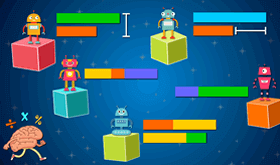
Thinking Blocks Junior
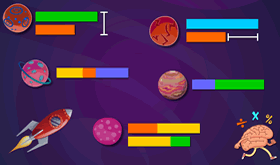
Thinking Blocks Addition
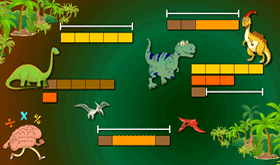
Thinking Blocks Multiplication
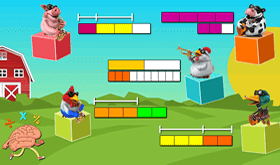
Thinking Blocks Fractions
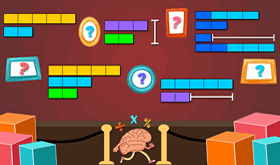
Thinking Blocks Ratios
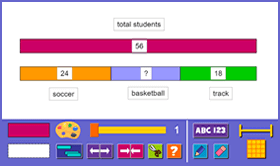
Thinking Blocks Tool

Part-Whole A

Part-Whole B

Mixed Operations
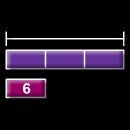
Critical Thinking

Fraction of a Set A

Fraction of a Set B
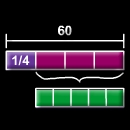
Fraction of a Set C

Add and Subtract A

Add and Subtract B

Multiply and Divide

% of a Number

Taxes, Tips, Sales

% Challenge A
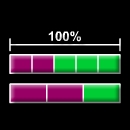
% Challenge B

Three Quantities
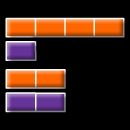
Visit CI Central | Visit Our Continuous Improvement Store
- [email protected]
- 1-425-939-1604
9-Square (Prioritization Tool)
Last updated by Jeff Hajek on October 19, 2020
The 9-square is a prioritization tool in Lean problem solving that helps you organize your improvement ideas. After completing a brainstorming session in which you compile a large number of viable options, you have to decide which ones to implement. To use the 9-square, rank each problem in two categories: impact and ease of implementation.
Create a 3 x 3 grid, with low, medium, and high impact as the vertical scale. Hard, medium, and easy to implement go on the horizontal scale. Place your options into the appropriate boxes. At this point, there may be little hard information, but you should be able to make an educated guess as to which square each idea should fall into.

The 9-square gives a visual representation of where projects fall relative to each other. I normally code each idea with a letter and write the corresponding letters on the grid—otherwise in a big project the 9-square quickly becomes cluttered. Alternately, I use a large grid on the wall and place sticky notes in the appropriate location. You end up with something like this example.
In some cases, the decision of which idea to try is not perfectly clear. You might have to choose between two similarly valued proposals. For example, would you rather do a medium impact, but easy project (F), or a high impact project that will require medium effort (B)? You will run into a few of these situations, but generally, you’ll end up with the most desirable project being at the top right, and the worst options at the lower left.
In this example, determining the sequence (except for the second and third spot) is a rather easy task. For the ones that are not crystal clear, you can always do a little research, or you can just pick one. The cost of getting the perfect answer might actually outweigh the difference in the benefit between the two choices.
Remember, though, this is a very, very rough prioritization tool. It is based on educated guesses and assumptions, so it should only be used in low-risk or low-cost situation. Don’t choose a new ERP using a 9-square. You can, however, pick between a few locations for a parts rack, or from among several ideas on how to improve phone service in a small call center. When the stakes are higher, you need a tool that is more data driven.
Leave a Reply Cancel reply
Your email address will not be published. Required fields are marked *
The Lean Thinker
Thoughts and Insights from the Shop Floor
Toyota Kata “A3 Problem Solving”
Over the years, I’ve been exposed a number of efforts to “implement A3 problem solving” in various companies. I worked for some of those companies, I’ve observed others.
The results are nearly always the same.
Here are a couple of examples. Let me know if any of these match up with experiences you have had.
Example 1: The company had put many people through “Practical Problem Solving” training and was (ironically) trying to measure how many problem solving efforts were underway.
I was watching a presentation by one of these problem solving teams to management. Their A3 was on a computer, projected onto the screen. They were reporting their “results.” Yet there were large discontinuities in their problem solving flow. The actions they were taking simply did not link back (through any kind of identifiable cause) to the problem they were solving.
The management team listened carefully, applauded their efforts, and moved on to the next topic of their meeting.
Example 2: A different company had a form to fill out called an “MBF” or “Management by Fact.” From the labels on the boxes, it was clearly intended to be structured problem solving. By the time I worked there, however, “MBF” had become a verb. It was a solo activity, filling out the form at the desk, and reporting on it in a staff meeting.
Example 3: Well-meaning former Toyota team members, now working for a different large company wanted to “train everyone in problem solving.” They put together a “class” that presented the purpose of each block on their A3 form with the expectation that people would adopt the process.
All of these efforts had something in common.
They didn’t work.
Over the last few days, I’ve been privileged to be included in an email exchange about the relationship between A3 and Mike Rother’s Toyota Kata . My small contribution was apparently enough to get my name onto the cover, but I want to give a real nod in the direction of a Jenny Snow-Boscolo for instigating inspiring a really good exchange.
One of the difficulties with gaining insight into Toyota’s management processes is that they really aren’t codified. This shouldn’t be a surprise. Look at your own company, and ask how much of the culture – the reflexive way things are done and interactions are structured – is written down.
(In fact, if it is written down, I would contend it is likely your actual culture has little resemblance to what is written about it. Those things tend to be more about what they wish the culture was.)
Culture, any culture, is learned through daily interaction. This is all well and good in cases where people are immersed in it from the beginning.
But the rest of us aren’t operating in that problem solving culture. Rather, we are trying to create it. And as the former Toyota Team Members from Example 3 (above) learned, it isn’t a simple matter of showing people.
Rather than two different things, we are looking at a continuum here. At one end is the culture described on Slide 9. There isn’t any formal structure to it, the process for teaching it isn’t codified. It is learned the same way you learn the way to get the job done in any company. They just learn different things than you did.
But in another organization there is no immersion. If there is anyone who is steeped in The Way, they are few and far between.
In these cases, we want to start with something more overt. And that is the purpose of having a rote drill or kata . It isn’t something you implement. It is a structure, or scaffold, to learn the basic moves. Just as mastering the musical scales is only a prelude to learning to play the instrument, the kata is the foundational structure for learning to apply the underlying thinking patterns.
Share this:
2 replies to “toyota kata “a3 problem solving””.
You failed to mention that many of us called “Management by Fact” by another name – “Management by Fiction.” While the former was the intention, the latter happened more often than the leaders knew.
“You must unlearn what you have learned.” -Yoda
Late to the post, but I came across it as I consider another foray into an A3-trained organization. Examples 1 and 3 are certainly familiar, though in my experience it was somebody far less qualified than a Toyota consultant who taught the organization that if they did A3 reports, Lean-thinking would commence (incidentally, this was at the same healthcare organization where I met you, Mark, when you contributed your time and knowledge toward using Toyota Kata in a healthcare setting, thus beginning our daily practice there. Thank you!). The result of “the A3 is the most important Lean tool” thinking was that by the time I was brought on board there were scattered yellowed-with-age A3 reports on a few department white boards and a general consensus of “we tried Lean and it didn’t really work” along with resistance to devoting any time to delving deeper into Lean management.
Unfortunately misery does not love company in this case. I would prefer that it was an isolated case, but as exemplified by the fact that you are writing about the issue, it is not. As more organization “tried Lean” this will likely become more and more common. I like the idea of incorporating the kata into A3 reporting for those managers who are already using it, but when an executive team than has “done Lean” and moved on to other projects, changing the habits of the senior leadership may be the most important obstacle that needs to be addressed for the organization to succeed; possibly through iterative experiments toward the target condition of a transformed executive team!
Leave a Reply Cancel reply
Your email address will not be published. Required fields are marked *
Notify me of follow-up comments by email.
Notify me of new posts by email.
This site uses Akismet to reduce spam. Learn how your comment data is processed .
Home Collections Creative slides 3d Shapes 4 Blocker Template PowerPoint
Editable 4 Blocker PowerPoint and Google Slides Templates

Creative 4 Blocker PowerPoint Presentation Slides
Empower your strategic planning with our comprehensive range of 4 Blocker PowerPoint templates, designed to streamline your presentations and enhance decision-making. Elevate your project management discussions and status updates using visually compelling layouts that segment information into four essential blocks. Explore our diverse collection of customizable templates, tailored to suit various industries and project requirements. With intuitive designs and easy-to-use features, our 4 Blocker PowerPoint templates enable you to succinctly present critical information, ensuring clarity and focus during meetings or reviews. Communicate project statuses, risks, objectives, and action plans crisply and effectively, capturing attention and facilitating robust discussions. Whether you're a project manager, team lead, or executive, these templates offer a structured approach to convey complex information effortlessly. Revolutionize your presentations with our 4 Blocker PowerPoint templates, transforming data and analysis into concise, visually engaging reports that drive informed decision-making and propel your projects towards success.
Features of this Template:
- It is a 100% customized template
- It is easy to download.
- Templates are available in different nodes & colors.
- The slide contained 16:9 and 4:3 formats.
- Easy to change the slide colors quickly.
- Well-crafted template with instant download facility.
- Creative design with text area.
- Four Blocker
- 4 Blocker Diagram
- 4 Blocker List
- 3D Stepped Diagram
- Google Slides
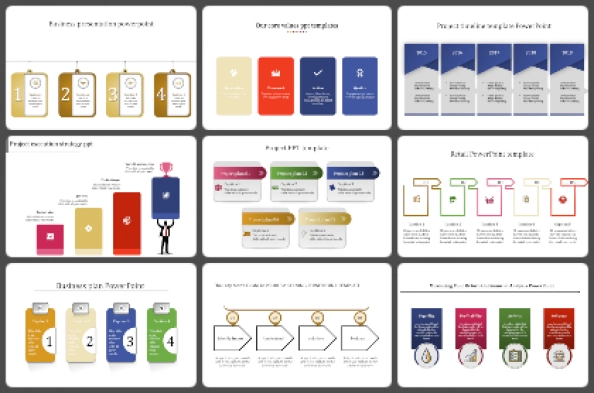
Linear - Single
602+ Templates
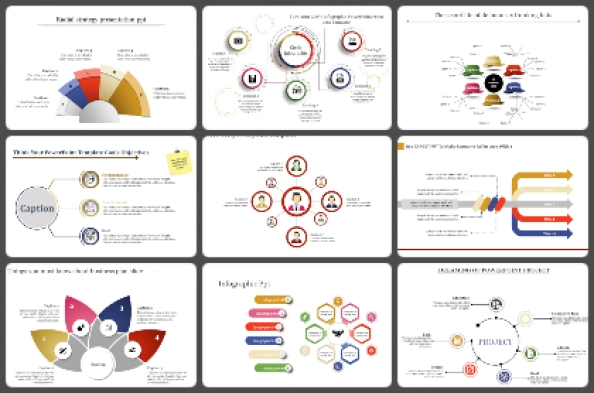
Linear - One to Many
866+ Templates
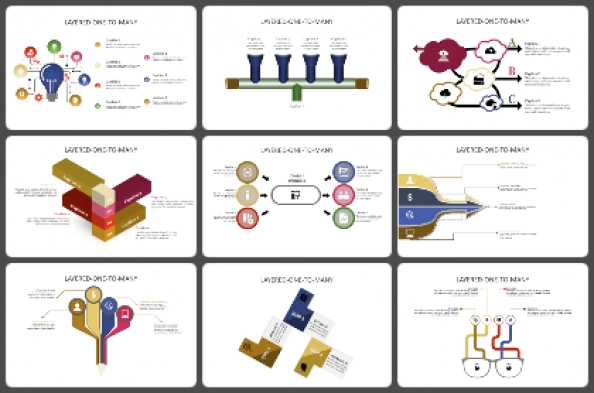
Linear - Many to One
62+ Templates
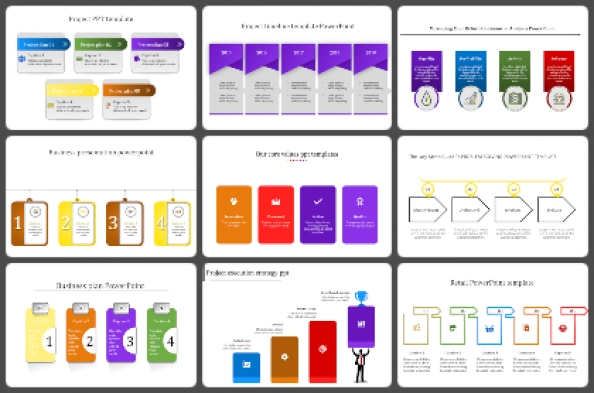
Linear - Parallel
604+ Templates

Linear - One to Many to One
25+ Templates

Linear - Many to One to Many
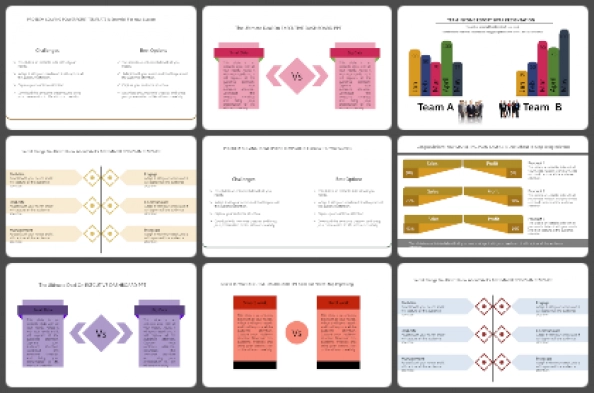
Linear - Opposition
27+ Templates
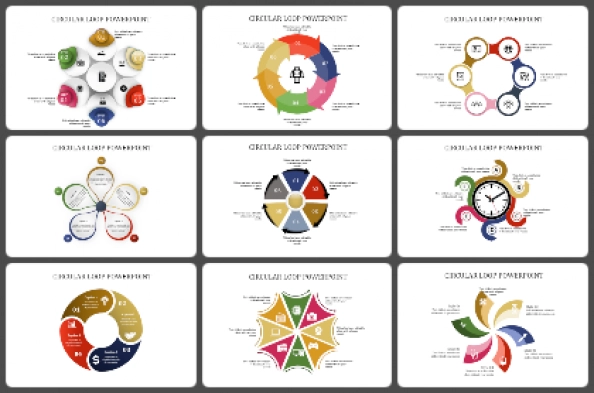
Circular - Loop
469+ Templates
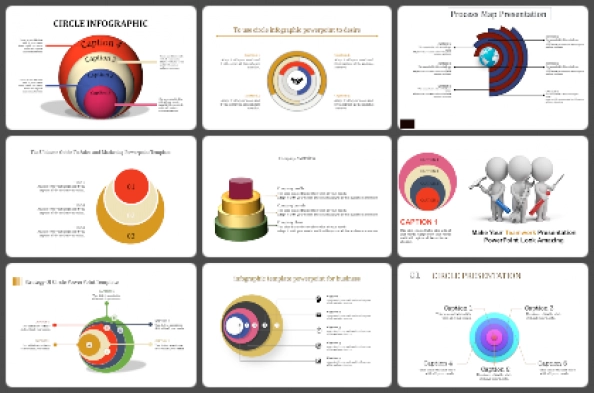
95+ Templates
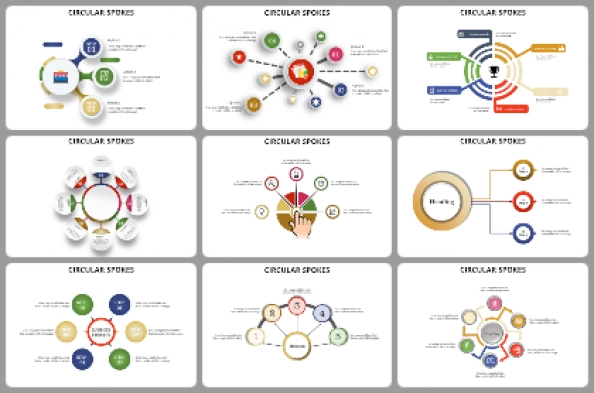
Circular - Spokes
453+ Templates
You May Also Like These PowerPoint Templates

DSpace JSPUI
Egyankosh preserves and enables easy and open access to all types of digital content including text, images, moving images, mpegs and data sets.
- IGNOU Self Learning Material (SLM)
- 02. School of Social Sciences (SOSS)
- Master's Degree Programmes
- M. A. in Psychology (MAPC)
- MPC-001 Cognitive Psychology, Learning and Memory
Block-4 Problem Solving Collection home page
| Issue Date | Contributor(s) | |
|---|---|---|
| - | ||
| - | ||
| - | ||
| - | ||
| - |

A business journal from the Wharton School of the University of Pennsylvania
For New Ideas, Think Inside (This) Box
June 25, 2024 • 7 min read.
In this Nano Tool for Leaders, Penn's David Resnick offers guidance on using helpful constraints to unlock new solutions to old problems.

Nano Tools for Leaders® — a collaboration between Wharton Executive Education and Wharton’s Center for Leadership and Change Management — are fast, effective tools that you can learn and start using in less than 15 minutes, with the potential to significantly impact your success and the engagement and productivity of the people you lead.
Harness constraints and analogies to unlock new solutions to old problems.
Traditional brainstorming, as coined by Alex Osborne in the 1950s, asks participants to consider any and all ideas that might solve a problem. While blue-sky, no-limits thinking has several benefits, the drawback is that leaders often, paradoxically, get stuck. They encounter challenges like the “curse of the blank page,” not knowing where to start because they can start anywhere. They may also face the “ Einstellung effect ,” a phenomenon whereby the easy recollection of familiar solutions can block their ability to think of new ones.
This has led some to (erroneously) believe that generating solutions is best left to people who are naturally creative. The good news is that there are tools that can help one become much better at generating new ideas. The even better news is that using these tools does not involve extensive training or attending workshops. In fact, one tool developed at Penn Medicine’s Center for Health Care Transformation and Innovation is a simple card game , and the “secret sauce” it teaches is how to leverage constraints and analogies. The Accelerators in Innovation game has teams of players use accelerator cards to create new kinds of solutions with questions such as “How would you solve postpartum depression if you operated like IKEA?” and “How might you tackle long emergency room wait times if you were Warren Buffet?” The solutions are then applied to problems presented on challenge cards while trying to avoid monkey wrenches from their opponents. After rapid-fire pitches, the judge determines each round’s winner.
Action Steps
1. make sure you are solving a problem..
Don’t solve for how to implement a solution. A classic example involved a design team brought in to figure out how to increase access to incubators. The issue is that the solution was already baked in (increase access to incubators). The team spent some time reframing the problem to focus on the true issue: ensuring that newborns are kept at a safe temperature, especially when delivery occurs in places with little or no access to electricity. Reframing to focus on the actual problem opened the team to entirely different solutions.
2. Leverage analogies.
Having to pull ideas out of thin air can be difficult and stressful. Analogies force us to consider other options or perspectives we may never have thought of, or thought of and dismissed. They cause us to ask ourselves “What is good about this other solution and how might it be applied to solving the problem I’m facing?” Examples include:
Think about successful companies and how their strengths could be applied to your problem. For example, IKEA is phenomenal at clearly explaining to people with limited background knowledge and literacy how to do something. So how might IKEA go about explaining post-op care to knee replacement patients?
Similarly, try using personas. Mary Poppins is renowned for making an unpleasant experience a delightful one. Mr. Rogers is known for his commitment to leveraging the kindness of neighbors. Darth Vader’s approach to getting things done is a ruthless level punishment for those who fail. Regardless of whom you choose, you can use the strengths or philosophies of these characters to inspire ideas. How might Mary Poppins improve adherence to physical therapy regimens? How might Darth Vader?
3. Leverage constraints.
Constraints are, unintuitively, another great way to force new thinking. Some options are:
How might you solve a problem if you were forced to delete a crucial (but perhaps onerous or costly) step of the process? Great examples are “How might tollbooths collect fees without a human there to do it?” (FastPass) or “How might people get their rental car if there was no line to wait in?” (Hertz Gold).
Design for extremes
How might you solve the problem if you had to solve for extreme use cases or extreme targets? For example, what would it take to screen 100 percent of eligible patients for colon cancer? How might you reduce civilian traffic fatalities to zero?
Real-world issues
Apply real-world constraints that have thrown a monkey wrench in your plans for past ideas. For example, how might you create a new marketing campaign that must be successful for consumers who do not speak English? How might you build a new product to launch on time even if multiple team members take a sabbatical or parental leave?
Focus on solving for how to make your solution delightful to users. This isn’t about making something silly or fun. It’s about surprising your users in a manner that unexpectedly accomplishes something for them.
4. Push for volume.
An additional benefit to Penn Medicine’s Accelerators card game is that it encourages multiple rounds to hear multiple ideas. When thinking of solutions, push for volume in your initial rounds. You’ll soon “use up” the ideas that come to mind easily and be forced to consider more creative or audacious alternatives.
5. Don’t take yourself too seriously.
Another key component of generating ideas while playing a game is that it allows for laughter and a sense of play. This mindset can foster creativity and an atmosphere of psychological safety for sharing ideas.
How One Leader Uses It
Rebecca Trotta, PhD, director of the Center for Nursing Excellence at Penn, leveraged this tool in developing a new program to support older adults after hospitalization. Her challenge was to build a service that could provide intensive at-home support. Despite an existing evidence-based protocol, there was concern that patient acceptance of this support would be low. Many folks are simply exhausted after being in the hospital and don’t want someone in their home. Using the constraint of solving for “delight,” Trotta and her team came up with the idea of delivering home meals to these patients and their caregivers.
While it might appear as a frivolous and seemingly useless expense, it turned out that after spending days (and sometimes weeks) in the hospital, patients came home to fridges that were empty or full of spoiled food. Providing them with a meal ensured they had adequate nutrition. More importantly, though, the meals showed a sense of caring and thoughtfulness that went well beyond patients’ expectations. It built a strong sense of trust that paid dividends in drastically increasing the acceptance of home services compared to baseline.
Contributor to this Nano Tool
David Resnick, MPH, MSEd, Senior Innovation Manager at Penn Medicine’s Center for Health Care Transformation and Innovation. Accelerators in Health Care card game co-created with Michael Begley, MA, Senior Experience Consultant at EPAM Systems, and Visiting Professor and Assistant Program Director of Masters of UX at Thomas Jefferson University.
Knowledge in Action: Related Executive Education Programs
- Effective Decision Making: Thinking Critically and Rationally
- The Neuroscience of Business: Innovations in Leadership and Strategic Decisions
- Mastering Innovation: Strategy, Process, and Tools
- Business Model Innovation in the Age of AI
Additional Resources
Access all Wharton Executive Education Nano Tools
Download this Nano Tool as a PDF
More From Knowledge at Wharton

Why a Partnership With OpenAI Benefits All Parties
How the pandemic accelerated the use of digital wallets, how financial frictions could hinder innovation, looking for more insights.
Sign up to stay informed about our latest article releases.
More From Forbes
Stumped five ways to hone your problem-solving skills.
- Share to Facebook
- Share to Twitter
- Share to Linkedin

Respect the worth of other people's insights
Problems continuously arise in organizational life, making problem-solving an essential skill for leaders. Leaders who are good at tackling conundrums are likely to be more effective at overcoming obstacles and guiding their teams to achieve their goals. So, what’s the secret to better problem-solving skills?
1. Understand the root cause of the problem
“Too often, people fail because they haven’t correctly defined what the problem is,” says David Ross, an international strategist, founder of consultancy Phoenix Strategic Management and author of Confronting the Storm: Regenerating Leadership and Hope in the Age of Uncertainty .
Ross explains that as teams grapple with “wicked” problems – those where there can be several root causes for why a problem exists – there can often be disagreement on the initial assumptions made. As a result, their chances of successfully solving the problem are low.
“Before commencing the process of solving the problem, it is worthwhile identifying who your key stakeholders are and talking to them about the issue,” Ross recommends. “Who could be affected by the issue? What is the problem – and why? How are people affected?”
He argues that if leaders treat people with dignity, respecting the worth of their insights, they are more likely to successfully solve problems.
Best High-Yield Savings Accounts Of 2024
Best 5% interest savings accounts of 2024, 2. unfocus the mind.
“To solve problems, we need to commit to making time to face a problem in its full complexity, which also requires that we take back control of our thinking,” says Chris Griffiths, an expert on creativity and innovative thinking skills, founder and CEO of software provider OpenGenius, and co-author of The Focus Fix: Finding Clarity, Creativity and Resilience in an Overwhelming World .
To do this, it’s necessary to harness the power of the unfocused mind, according to Griffiths. “It might sound oxymoronic, but just like our devices, our brain needs time to recharge,” he says. “ A plethora of research has shown that daydreaming allows us to make creative connections and see abstract solutions that are not obvious when we’re engaged in direct work.”
To make use of the unfocused mind in problem solving, you must begin by getting to know the problem from all angles. “At this stage, don’t worry about actually solving the problem,” says Griffiths. “You’re simply giving your subconscious mind the information it needs to get creative with when you zone out. From here, pick a monotonous or rhythmic activity that will help you to activate the daydreaming state – that might be a walk, some doodling, or even some chores.”
Do this regularly, argues Griffiths, and you’ll soon find that flashes of inspiration and novel solutions naturally present themselves while you’re ostensibly thinking of other things. He says: “By allowing you to access the fullest creative potential of your own brain, daydreaming acts as a skeleton key for a wide range of problems.”
3. Be comfortable making judgment calls
“Admitting to not knowing the future takes courage,” says Professor Stephen Wyatt, founder and lead consultant at consultancy Corporate Rebirth and author of Antidote to the Crisis of Leadership: Opportunity in Complexity . “Leaders are worried our teams won’t respect us and our boards will lose faith in us, but what doesn’t work is drawing up plans and forecasts and holding yourself or others rigidly to them.”
Wyatt advises leaders to heighten their situational awareness – to look broadly, integrate more perspectives and be able to connect the dots. “We need to be comfortable in making judgment calls as the future is unknown,” he says. “There is no data on it. But equally, very few initiatives cannot be adjusted, refined or reviewed while in motion.”
Leaders need to stay vigilant, according to Wyatt, create the capacity of the enterprise to adapt and maintain the support of stakeholders. “The concept of the infallible leader needs to be updated,” he concludes.
4. Be prepared to fail and learn
“Organisations, and arguably society more widely, are obsessed with problems and the notion of problems,” says Steve Hearsum, founder of organizational change consultancy Edge + Stretch and author of No Silver Bullet: Bursting the Bubble of the Organisational Quick Fix .
Hearsum argues that this tendency is complicated by the myth of fixability, namely the idea that all problems, however complex, have a solution. “Our need for certainty, to minimize and dampen the anxiety of ‘not knowing,’ leads us to oversimplify and ignore or filter out anything that challenges the idea that there is a solution,” he says.
Leaders need to shift their mindset to cultivate their comfort with not knowing and couple that with being OK with being wrong, sometimes, notes Hearsum. He adds: “That means developing reflexivity to understand your own beliefs and judgments, and what influences these, asking questions and experimenting.”
5. Unleash the power of empathy
Leaders must be able to communicate problems in order to find solutions to them. But they should avoid bombarding their teams with complex, technical details since these can overwhelm their people’s cognitive load, says Dr Jessica Barker MBE , author of Hacked: The Secrets Behind Cyber Attacks .
Instead, she recommends that leaders frame their messages in ways that cut through jargon and ensure that their advice is relevant, accessible and actionable. “An essential leadership skill for this is empathy,” Barker explains. “When you’re trying to build a positive culture, it is crucial to understand why people are not practicing the behaviors you want rather than trying to force that behavioral change with fear, uncertainty and doubt.”

- Editorial Standards
- Reprints & Permissions
Join The Conversation
One Community. Many Voices. Create a free account to share your thoughts.
Forbes Community Guidelines
Our community is about connecting people through open and thoughtful conversations. We want our readers to share their views and exchange ideas and facts in a safe space.
In order to do so, please follow the posting rules in our site's Terms of Service. We've summarized some of those key rules below. Simply put, keep it civil.
Your post will be rejected if we notice that it seems to contain:
- False or intentionally out-of-context or misleading information
- Insults, profanity, incoherent, obscene or inflammatory language or threats of any kind
- Attacks on the identity of other commenters or the article's author
- Content that otherwise violates our site's terms.
User accounts will be blocked if we notice or believe that users are engaged in:
- Continuous attempts to re-post comments that have been previously moderated/rejected
- Racist, sexist, homophobic or other discriminatory comments
- Attempts or tactics that put the site security at risk
- Actions that otherwise violate our site's terms.
So, how can you be a power user?
- Stay on topic and share your insights
- Feel free to be clear and thoughtful to get your point across
- ‘Like’ or ‘Dislike’ to show your point of view.
- Protect your community.
- Use the report tool to alert us when someone breaks the rules.
Thanks for reading our community guidelines. Please read the full list of posting rules found in our site's Terms of Service.
- Trending Now
- Foundational Courses
- Data Science
- Practice Problem
- Machine Learning
- System Design
- DevOps Tutorial
Welcome to the daily solving of our PROBLEM OF THE DAY with Yash Dwivedi. We will discuss the entire problem step-by-step and work towards developing an optimized solution. This will not only help you brush up on your concepts of Tree but also build up problem-solving skills. Given a binary tree, your task is to find all duplicate subtrees from the given binary tree.
Duplicate Subtree : Two trees are duplicates if they have the same structure with the same node values.
Note: Return the root of each tree in the form of a list array & the driver code will print the tree in pre-order tree traversal in lexicographically increasing order.
Examples: Input : 1 / \ 2 3 / / \ 4 2 4 / 4 Output: 2 4 4 Explanation: The above tree have two duplicate subtrees.i.e 2 / 4 and 4. Therefore, you need to return the above tree root in the form of a list.
Give the problem a try before going through the video. All the best!!! Problem Link: https://practice.geeksforgeeks.org/problems/duplicate-subtrees/1

EIP-7732: What is Proposer-Builder Separation and Can it Solve Ethereum’s Bot Problem?
EIP-7732 would enforce Proposer-Builder Separation on Ethereum validators. Photo by Thorsten Konersmann on Unsplash.
- Bitcoin July 4, 2024 11:22 AM Dell Founder’s Tweet Fuels Speculation of Bitcoin Investment Following $2.1 Billion Cashout
- Bitcoin July 4, 2024 11:22 AM Mt. Gox July Repayment Announcement Sparks Speculation of Bitcoin Price Bottom
- Crypto July 4, 2024 11:22 AM Ripple Lawsuit Alleges Brad Garlinghouse Lied About Being Long on XRP and Instead “Sold Millions of XRP”
- Technology July 4, 2024 11:22 AM OpenAI’s GPT-5: Set to Achieve Ph.D.-Level Intelligence by 2026, Says CTO Mira Murati
Key Takeaways
- A new Ethereum Improvement Proposal (EIP) could fundamentally change the way Ethereum blocks is validated.
- Under EIP-7732, the task of validation would be split between block builders and block proposers.
- The new Proposer-Builder Separation could help mitigate the negative impact of MEV bots.
Although the Ethereum community recently celebrated gas fees falling to their lowest level in 4 years , the prevalence of Maximum Extractable Value (MEV) bots that drive up costs for everyday users remains a problem.
An Ethereum Improvement Proposal (EIP) submitted on Wednesday, July 6, could help solve the network’s bot problem through a mechanism known as Proposer-Builder Separation (PBS).
Understanding Proposer-Builder Separation
As outlined in EIP-7732 , Proposer-Builder Separation decouples the process of building and proposing blocks on the Ethereum blockchain.
📢 Announcing EIP-7732: Enshrined Proposer-Builder Separation! This proposal revolutionizes Ethereum block validation by separating execution validation from consensus validation, both logically and temporally. It introduces a new role, the builder, and a new responsibility for… pic.twitter.com/o6Iicyed9u — Collin Brown (@CollinBrownXRP) July 4, 2024
Whereas the current scheme sees validators perform both tasks, PBS separates each Ethereum block into consensus and execution parts. Builders orders and bundles transactions while proposers add them to the blockchain.
How EIP-7732 Could Impact Ethereum MEV
In a recent blog post exploring ways to make Ethereum more permissionless and decentralized, Vitalik Buterin argued that PBS could help implement what he called “MEV quarantining.”
As he explained, the current MEV problem stems from the way validators currently order transactions in a block to profit from DeFi arbitrage opportunities.
By outsourcing the task of choosing and ordering the content of a block to specialized builders, individual stakers no longer need to worry about optimizing DeFi arbitrage themselves. Instead, an auction mechanism lets consensus proposers choose the builder that offers the most profitable block.
Of course, under the PBS scheme proposed by EIP-7732, builders can still participate in MEV extraction. However, opportunities for front-running are significantly diminished and inefficient block proposals will naturally be rejected.
Minimizing Risk For Bots
Frequently referred to as bots, MEV extraction algorithms have become an unavoidable part of the Ethereum ecosystem.
In a sense, EIP-7732 simply enshrines the PBS scheme already created by the widespread use of MEV-Boost , a validator optimization software developed by Flashbots.
Brothers Anton and James Peraire-Bueno arrested for a sophisticated $25M MEV-boost hack on April 2, 2023. https://t.co/O084AoeKrO Two MIT graduates now facing up to 20 years in prison. Caught laundering stolen crypto and googling how to do it. https://t.co/PTXxN0K1Fp pic.twitter.com/Ad0rACtJkh — Peter Kacherginsky (@_iphelix) May 15, 2024
While it somewhat mitigates the negative effects of maximum extractable value, the popularity of MEV-Boost has opened the software to exploitation. In May, two brothers were arrested on fraud charges for their role in a $25 million hack that lured MEV bots into posting illiquid trades to a validator they controlled and swapping them with tampered transactions.
By universalizing the PBS scheme, the latest Ethereum proposal allows for more trustless interactions, “guaranteeing that an honest [block proposer] will receive payment from the builder regardless of the latter’s actions.”
James Morales

Ethereum Gas Fees Fall to 4-Year Low But High-Transaction Bots Still Pay Thousands
Stablecoins Overhyped? Bots Drive 90% of Activity on Ethereum and Solana
Ethereum Developers Endorse Quantum Resistance, Enhanced Flexibility, and Forward Compatibility in Vitalik Buterin’s EIP-7702

- Advanced Search
A block upper triangular preconditioner with two parameters for saddle-point problems
New citation alert added.
This alert has been successfully added and will be sent to:
You will be notified whenever a record that you have chosen has been cited.
To manage your alert preferences, click on the button below.
New Citation Alert!
Please log in to your account
Information & Contributors
Bibliometrics & citations, view options, recommendations, preconditioners for generalized saddle-point problems.
\noindent We propose and examine block-diagonal preconditioners and variants of indefinite preconditioners for block two-by-two generalized saddle-point problems. That is, we consider the nonsymmetric, nonsingular case where the (2,2) block is small in ...
Variants of the accelerated parameterized inexact Uzawa method for saddle-point problems
In this paper, based on the SOR and SSOR splittings of the (1,1) part of saddle-point coefficient matrix, some variants of the accelerated parameterized inexact Uzawa (VAPIU) method are proposed for solving nonsingular and singular saddle-point ...
A class of Uzawa-SOR methods for saddle point problems
In this paper, we consider a class of Uzawa-SOR methods for saddle point problems, and prove the convergence of the proposed methods. We solve a lower triangular system per iteration in the proposed methods, instead of solving a linear equation Az=b. ...
Information
Published in.
Pergamon Press, Inc.
United States
Publication History
Author tags.
- Saddle-point problems
- GSOR method
- Iterative methods
- Optimal parameters
- Convergence factor
- Research-article
Contributors
Other metrics, bibliometrics, article metrics.
- 0 Total Citations
- 0 Total Downloads
- Downloads (Last 12 months) 0
- Downloads (Last 6 weeks) 0
View options
Login options.
Check if you have access through your login credentials or your institution to get full access on this article.
Full Access
Share this publication link.
Copying failed.
Share on social media
Affiliations, export citations.
- Please download or close your previous search result export first before starting a new bulk export. Preview is not available. By clicking download, a status dialog will open to start the export process. The process may take a few minutes but once it finishes a file will be downloadable from your browser. You may continue to browse the DL while the export process is in progress. Download
- Download citation
- Copy citation
We are preparing your search results for download ...
We will inform you here when the file is ready.
Your file of search results citations is now ready.
Your search export query has expired. Please try again.

IMAGES
VIDEO
COMMENTS
Here are the steps to follow for how to create a four blocker: 1. Prepare the document. Prepare the document you'll use for the four blocker. Consider creating the document on a shared platform that allows others to view and update the chart easily, encouraging collaboration among your team. Divide the document into four equal quadrants using ...
4-Blockers help visualize performance & rank problems, and engage teams to collaborate to prioritize issues and drive corrective action & accountability.... leading to improved performance and less daily stress. A 4-Blocker is a highly adaptable and effective 1-page collaboration tool that shows multiple views of a process over a given period ...
4 Block Math Problem Solving. D. Russell. Print the 4 Block Math Template in PDF. In this article I explain how to use this graphic organizer in math which is sometimes referred to as: 4 corners, 4 block or 4 square.. This template works well for solving problems in math that require more than one step or with problems that could be solved by using different strategies.
The 4 Blocker is a one-page document that gives a stakeholder critical information at a glance. Not only does this give them a high-level understanding of the project, but it's also helpful to ensure that the project management team shares information with clients uniformly, no matter who's sending it. While the 4 Blocker may have initially ...
Block #4 (right hand side, on the bottom): People are interested in the past, more into the future. Do not underestimate the content of the fourth area as it will support you when you are speaking about the future and the path forward. Carefully summarize the next steps and highlight the deadlines.
The A3 technique is a structured way to solve problems. It's part of the Lean methodology, developed by Toyota back in the mid-'40s. This doesn't mean you need to implement a Lean way of working to take advantage of this process — it can work as a standalone exercise. Granted, A3 isn't an inspiring name, but the story of its origins ...
From my notes to the PMP course I took, with an ATP ( the GreyCampus PMP course, which I recommend ), the PMI defines: Impediments: something that slows down or hinders progress. Obstacles: something you need to move, go around, avoid, or overcome, using a strategy. Blockers: something that causes work to stop.
However, it can also be used to solve problems like a typical 4 block problem. See the Handshake Problem example next. 4 of 04. 4 Block using Handshake Problem Here is an example of the handshake problem being solve by a 10 year old. The problem was: If 25 people shake hands, how many handshakes will there be?
How to create a 4 blocker. The steps to create a four blocker are as follows: 1. Prepare the document. Prepare the document youll use for the four blocker. Think about putting the document on a shared platform so that others can easily view and update the chart and promote teamwork. Using line tools, divide the document into four equal ...
👉 Make sure your presentations are professional. See the PowerPoint tutorial course at https://hourtolearn.com/powerpoint★★★★★ Overwhelmed by your ...
Initial Setup. Layout the initial state of the board. You can create blocks by dragging the left mouse button over empty space. Click on a block to get a popup menu. Blocks can be marked "Locked In Place" so the solver knows it may not move them. << Previous.
4. Implement the Solution. At this stage of problem solving, be prepared for feedback, and plan for this. When you roll out the solution, request feedback on the success of the change made. 5. Review, Iterate, and Improve. Making a change shouldn't be a one time action.
The 4-Step Problem-Solving Process. This document is the third in a series intended to help school and district leaders maximize the effectiveness and fluidity of their multi-tiered system of supports (MTSS) across different learning environments. Specifically, the document is designed to support the use of problem solving to improve outcomes ...
This ONE PAGE 4 blocker template [aka Four Blocker Template] is perfect for presenting a status update - especially to senior management. It helps reduce the amount of time needed, communicates the status succinctly and clearly, and is respectful of everyone's time. Watch the video below for instructions and advice when presenting a status ...
Problem Solving the Thinking Blocks® Way! We updated our Thinking Blocks suite of learning tools with all new features. read aloud word problems - visual prompts - better models - engaging themes - mobile friendly.
9-Square (Prioritization Tool) The 9-square is a prioritization tool in Lean problem solving that helps you organize your improvement ideas. After completing a brainstorming session in which you compile a large number of viable options, you have to decide which ones to implement. To use the 9-square, rank each problem in two categories: impact ...
Common obstacles to solving problems. The example also illustrates two common problems that sometimes happen during problem solving. One of these is functional fixedness: a tendency to regard the functions of objects and ideas as fixed (German & Barrett, 2005).Over time, we get so used to one particular purpose for an object that we overlook other uses.
Example 3: Well-meaning former Toyota team members, now working for a different large company wanted to "train everyone in problem solving.". They put together a "class" that presented the purpose of each block on their A3 form with the expectation that people would adopt the process. All of these efforts had something in common.
Ease measures how easy or difficult it is to resolve the blocker. Multiply these three criteria to get an ICE score for each blocker. Prioritize the blockers with the highest ICE scores first. By ...
Overcoming Obstacles with 4-Blocker Templates Overcome obstacles and challenges with our 4-blocker templates, designed for problem-solving, decision-making, and action planning in business contexts. These templates offer structured layouts, block frameworks, and visual aids for analyzing issues, generating solutions, and making informed ...
Creative 4 Blocker PowerPoint Presentation Slides. Empower your strategic planning with our comprehensive range of 4 Blocker PowerPoint templates, designed to streamline your presentations and enhance decision-making. Elevate your project management discussions and status updates using visually compelling layouts that segment information into ...
task; 2) highlight different problem solving strategies; 3) recognize milestone snapshots, i.e. those that strongly correlate with correct solutions, or early warning signs; 4) summarize problem solving processes; 5) present individual processes and strategies in detail. The paper then proceeds to showcase BlockLens and to present
Block-4 Problem Solving-2017: Unit-1 Nature of Problem Solving-2017: Unit-2 Stages of Problem Solving-2017: Unit-3 Theoretical Approaches to Problem Solving-2017: Unit-4 Impediments to Problem Solving-Collection's Items (Sorted by Submit Date in Descending order): 1 to 5 of 5 Discover. Date issued. 4 2017;
Traditional brainstorming, as coined by Alex Osborne in the 1950s, asks participants to consider any and all ideas that might solve a problem. While blue-sky, no-limits thinking has several ...
Respect the worth of other people's insights. getty. Problems continuously arise in organizational life, making problem-solving an essential skill for leaders.
Welcome to the daily solving of our PROBLEM OF THE DAY with Yash Dwivedi. We will discuss the entire problem step-by-step and work towards developing an optimized solution. This will not only help you brush up on your concepts of Tree but also build up problem-solving skills. Given a binary tree, your task is to find all duplicate subtrees from the given binary tree.
The rise of Buffalo Bills edge rusher Gregory Rousseau in the last three seasons has made everyone take notice of his superb talent as a member of Sean McDermott's defense.. In his 46 games ...
Under EIP-7732, the task of validation would be split between block builders and block proposers. The new Proposer-Builder Separation could help mitigate the negative impact of MEV bots. Although the Ethereum community recently celebrated gas fees falling to their lowest level in 4 years , the prevalence of Maximum Extractable Value (MEV) bots ...
Ramos H., Abdulganiy R., Olowe R., Jator S., A family of functionally-fitted third derivative block Falkner methods for solving second-order initial-value problems with oscillating solutions, Mathematics 9 (7) (2021) 713.
In this paper, a simple preconditioner with two parameters (SPTP) is introduced for solving a class of saddle-point problems. The SPTP preconditioner is block upper triangular and does not contain the approximate matrix of the Schur complement matrix.